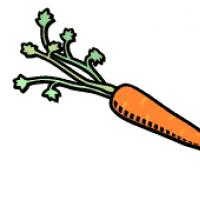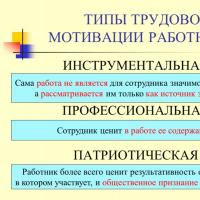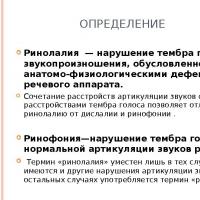Ceiling plinth over painted wallpaper. How to cut wallpaper for a ceiling plinth. Ceiling tiles or wallpaper first
You can cut the edges of the wallpaper panels with a knife or scissors. Depending on whether the skirting boards have been removed, the trimming of the bottom edge is different. If the plinth was not removed for some reason, then the bottom edge of the wallpaper covers the plinth.
When using scissors and not dried wallpaper:
- move the spatula to the next section of the wallpaper and repeat the operation to trim the edge of the wallpaper;
- If the plinth was removed during the repair of the wall, then trimming is done directly at the junction of the wall.
- The upper edge of the wallpaper is usually closed with a border or border, therefore, there are also no very high requirements for the straightness of the cut line, and here it is possible to use both a knife and scissors.
Knife:
- press a wide spatula at the junction of the wall and ceiling;
cut the edge of the wallpaper with a wallpaper knife, using a spatula as a kind of ruler; - move the spatula to the next section of the wallpaper and repeat the operation to trim the edge of the wallpaper.
- Scissors:
mark the line along which you want to cut the edge of the wallpaper, along the ruler with any blunt object, for example, the blunt edge of scissors; - bend the edge of the wallpaper along the marked line with a pattern inward;
cut the edge of the wallpaper along the marked line with scissors; - press and glue the folded edge of the wallpaper in place;
If the platbands were nevertheless removed, then cutting the edge of the wallpaper is done with a knife along the ruler directly on the edge door frame. This place will then be covered with a casing, so neither the trace of the knife nor some of the uneven edges of the wallpaper will be visible.
But if the platbands were not removed, then:
cut off excess wallpaper with scissors approximately in the middle of the front of the casing, after pressing the wallpaper at the junction of the wall and casing;
- with a wide spatula, press the wallpaper at the junction of the wall and the casing;
- cut the edge of the wallpaper with a wallpaper knife, using a spatula as a ruler;

If window frame is located in a shallow niche of the wall and does not have platbands protruding into the room, then usually the wallpaper panel is pasted so that part of the panel remains in the air.

The problem is to cut the edge of the wallpaper flush with the slope angle without damaging the slope itself and maintaining an even cut of the wallpaper. Since the edge of the slope is not always perfectly even, the operation of trimming the edge turns into a problem: when cutting with a knife, it can be damaged; it is difficult to cut with scissors with an edge.
Window slopes are usually painted, and very rarely wallpapered.
Wallpapering archways
The inner surface of the arched passages is pasted over with wallpaper after pasting all the walls. Bend the wall paper around the edges of the archway, and then, to cover the folded edges, stick a strip of wallpaper or a border on the inside of the archway. To make the wallpaper lay flat, make a series of small cuts on the wallpaper panel along the bend of the arch. Use vinyl-to-vinyl glue to stick the strip in the arch.
Some wallpapers come with matching borders that can be used to cover the inside of an archway. You can also measure the inside of the arched passage and cut off a strip of wallpaper from a standard panel. This strip should be about 0.5 cm narrower than the inner surface of the arch.
How to glue wallpaper on the arch?
Trim the wallpaper covering the opening with scissors, leaving an allowance of about 2.5 cm.
Along the curved part of the arched passage, make a series of small cuts on the wallpaper; cuts should be made as close to the edge of the wall as possible.

Fold the cut edges over to the inside of the arch and press them down so that they lie flat. If you plan to cover the next room, fold the wallpaper around the edge of the passage on both sides.
 How to glue wallpaper in arches
How to glue wallpaper in arches
Apply vinyl-to-vinyl adhesive to the back of the archway strip. Stick the strip on the arch, leaving a space of about 0.3 cm on each side of the strip. Smooth the strip with a brush. Wipe the strip with a damp sponge.
What to glue first: ceiling plinth or wallpaper? This question is asked by both the novice specialist and the owner of the living space. decorative trim indoors, it gives comfort to the interior and creates a certain style, and a correctly chosen baguette for the ceiling can both narrow and expand the room, make it emphatically official or homely. The article will tell you how to glue the ceiling plinth on the wallpaper and on the wall.
Types and features of baguettes
(frieze, fillets, baguette) is used for interior decoration houses and apartments. At the same time, it goes well with various types of wallpaper, ceiling tiles and ordinary painting.
Tip: When decorating a room in a high-tech style, you should not use a frieze.
When purchasing a baguette, it is necessary to take into account the height of the ceiling and the size of the room. The larger they are, the larger the plinth should be.
By installing a baguette, you can:
- Hide defects that occur when puttying or wallpapering between the ceiling and the wall;
- Hide uneven cutting wallpaper;
- Decorate the room;
- Emphasize its outline;

- Give the finish a finished look.
A fairly diverse range of these products, when deciding to use them in the decor of the homeowner, allows you to choose the best way for the interior. Fillets differ in size, shape and material of manufacture.
Baguettes can be made from different material, but we will only touch on the most popular options:

- Foam, decorative. Such skirting boards for ceilings are used most often, which is explained by:
- low cost;
- beautiful appearance;
- small weight;
- ease of installation of elements;
- they do not absorb moisture;
- do not rot;
- easy to cut with a regular sharp knife;
The disadvantages include:
- low fire resistance;
- great fragility;
- sloppy joints due to the graininess of the material.

- . Such fillets can only be worked with even walls and ceilings, since the material is not flexible. They allow you to turn a modest room into a real palace. Products are fireproof, but, like all gypsum products, they are quite hygroscopic.
Material disadvantages:
- big weight;
- installation complexity.

- . It has all the advantages of foam plastic and more accurate joints, which is associated with an increased density of the material. But the price is slightly higher.

- . These products are used for rooms made in classical style. Because of the rich appearance, which can be seen in the photo below, and of great value, they belong to elite baguettes. They are made from expensive hardwoods:
- oak;
- ash;
- mahogany.
Lack of material - absorbs moisture, which may cause deformation and even mold over time.

The most popular are baguettes made of polystyrene foam and modern polystyrene foam.
The procedure for the repair of the premises
So, what to glue first, ceiling plinth or wallpaper? The quality of doing the work with your own hands depends on this.
However, in any case, the instructions for conducting preparatory work consists of the following:

- All dismantling works are carried out in the premises;
- Garbage is taken out;
- Windows, radiators, all joinery are being replaced;
- If necessary, change the electrical wiring;
- Slopes are made;
- The walls are leveled.

And then the finishing begins. Let's say right away that you can glue the ceiling plinth on the wallpaper. Moreover, many people do this to save time on trimming the wallpaper, which must be done when pasting exactly on the baseboard. However, this solution has several disadvantages:

- It's no secret that the walls in our apartments are often far from smooth. When gluing a skirting board on such a wall without wallpaper, it is always possible to seal all the cracks that form with gypsum putty or sealant. The result is neat connections, and the skirting board holds much better. When sticking on wallpaper, such a focus cannot be turned.
- Farther. If you glued the plinth to the wallpaper, then when finishing it, you run a great risk of staining the walls - you can smear glue with an awkward movement or drip paint when whitewashing.
- Well, and the last nuance - if you want to replace the wallpaper with new ones, you will have to cut through the old ones with a knife so as not to tear off the baguettes.
How is the ceiling plinth glued
Now let's take a closer look at the work itself.
To complete the work you will need:

- A carpenter's miter box and a hacksaw with a small tooth;

- Stationery knife;

- Roulette and pencil;

- For wooden and other hard skirting boards (except gypsum), it is better to purchase a miter saw.
Tip: Before gluing the ceiling plinth to the wallpaper, you should accurately calculate its quantity and purchase one extra piece in case of marriage when cutting.
Preparatory work - we determine the installation scheme
First you need to make a simple drawing. To do this, take a piece of paper and a pencil. The scale can be taken as 1 m = 1 cm. Thus, one plank of the ceiling plinth in the drawing will take 2 cm. Draw the perimeter of the room on the sheet. After that, place the plinth on the diagram so that you get the minimum amount of waste, that is, so that you have to cut the elements to a minimum.
Since the profile is not symmetrical, it is necessary to decide which side to glue it. It is often recommended to fasten the wide side of the fillet so as to cover surface flaws as much as possible. That is, if you glue the plinth over the wallpaper, then it is better to glue the wide side on the wall. If the ceiling surface is uneven and has some flaws in the corners, then the wide side is mounted to the ceiling.
How to fix a baguette over wallpaper
The order of operations is as follows:
- Marking is made on the ceiling and walls. In this case, a chopping thread or a long rule is used to align the baguette.
- For trimming the plinth, when joining the material in the corners, a miter box is used.

- A baguette is glued: first into the corners, then around the entire perimeter, but if there is a markup, the sequence of work does not matter. Liquid nails are used as glue. This glue is applied in a thin strip to the edge of the fillet on the reverse side, after which it is pressed against the wall. Excess glue squeezed out quickly, before it has time to dry, is wiped off with a damp sponge or rag.
- The gaps formed between the wall and the plinth, the joints, especially at the corners, are very carefully smeared with silicone. It is necessary to ensure that the excess does not fall on the wallpaper and floor.

Even precisely fitted parts do not interfere with smearing at the joints first of all
Advice! There is a way to do this as cleanly as possible, with virtually no risk of staining the wallpaper. Before sticking the plinth along the intended line from below, masking tape is glued, which will need to be removed after all work is completed.
- The frieze is painted with two brushes - one larger for the main part, the other small for neat whitening of the edges.
The sequence of work on sticking the frieze to sticking the wallpaper is practically the same, except that the baguettes can be processed much more carefully, with grinding the joints and other delights.
There are other benefits too:

It is very convenient to glue on putty, pay attention to this first of all
- As an adhesive, you can use finishing putty - this solution is more justified, since the plinth becomes almost monolithic with the wall.
- Walls do not need to be covered with masking tape before painting.
The density and properties of the materials from which the ceiling plinths are made affect the sequence of gluing them and wallpaper. Therefore, we can conclude: flexible and light friezes are glued to the wallpaper, heavy and hard ones are attached only to the wall.
What comes first, wallpaper or ceiling plinth? This question, we think, has been answered. The video attached to the article will reveal the topic in more detail.
Mounting the skirting board before wallpapering
In this case, the fillet is installed before finishing the walls with wallpaper. This method is used by professionals, as it allows you to seal all the cracks and joints even in the process of applying putty. The wallpaper is aligned under the already installed plinth. But in its complexity, this method is not much different from the previous one. It takes a little practice and even an amateur will do it no worse than a professional.
Ceiling plinths allow you to smooth the transition from walls to ceiling, in addition, they hide irregularities. But for this you need to correctly install these elements. Taking into account the information on how to install the skirting board - before pasting the wallpaper and after, you can decide which option is more suitable for you.
During the change of interior design, many controversial issues, even in cases where initially everything seems simple and understandable, and the work does not seem to be too laborious and lengthy. For example, when repairing, many people are interested in the answer to the question: when to glue the ceiling plinth - before or after wallpaper? It turns out that it is impossible to answer it immediately. The order of gluing baguettes depends on a variety of factors.
Purpose
The upper fillets play the role of decor, make the interior complete. In addition, they hide the border between the wall finishing material and whitewash. The main difference between ceiling plinths is the materials of manufacture and, accordingly, their physical properties. For the manufacture of fillets, the following materials are used:
- Wood. This is a great option for various interiors: classical, country, modern. Good expensive models are made of oak, walnut, larch or mahogany.
- Gypsum. This material is good because you can create the most complex shapes and profiles from it. However, when compared with natural stone, gypsum is much cheaper and lighter. But in order to successfully install a plaster baseboard, you need the walls to be perfectly aligned.
- Stone - is not used very often for making fillets, but the result is truly amazing. Stone products fit perfectly into a luxurious classic interior, sometimes products made from natural or artificial raw materials look organically in modern rooms. The cost of such products is quite high.
- Plastic. Polymer compounds are one of the most common. For ceiling moldings, materials such as polyurethane, polyethylene, polystyrene foam, PVC and many others are used.
Soft and hard baguettes and the time of their gluing
Of the listed materials, plastic products and, with some stretch, wooden products belong to the category of soft and flexible. If you ask a question when to glue a ceiling plinth, then you can answer:
- Lightweight flexible design can be glued directly on top of the wallpaper.
- With more massive baguettes, such an experience is unlikely to succeed.
The reason for this is as follows: it is quite difficult to align the wall to an impeccable state, the baguette has its own curvatures. It is customary to fill the gaps formed during installation with putty, and wallpaper as a basis for putty is rather poorly suited. The flexible product repeats the unevenness of the walls, and there is no need to use putty.
Important! What to glue first - wallpaper or ceiling plinth, if it is solid? If we are talking about wooden, plaster or stone structures that do not bend, then the plinth is first mounted, and then the wallpaper is pasted. In this case, the walls are the basis for puttying. In addition, a heavy structure will not only not hold on to paper or non-woven fabric, but will also come off along with the wallpaper.
Rules for self-assembly
After the wallpaper glue has dried, you can stick plastic baguettes:
- First, clean the place of gluing on the wall, as well as the adjacent part of the ceiling, from dust using a dry rag or brush.
- Do everything necessary measurements to properly cut baguettes.
- Cut corners at 45 degrees using a miter box.
- You can glue the plinth on silicone sealant. It's a good idea to use an adhesive designed for the type of plastic from which the baguette is made. Apply glue to the baguette dotted, press the part against the wall, and then release.
- To mask the gaps in the joints, use an acrylic-silicone sealant or a mixture of PVA glue with gypsum putty.
footage
Thus, the sequence of pasting the walls with wallpaper and the installation of ceiling plinths depends on the mass and material of manufacture of the latter. How to properly glue the ceiling plinth - before or after the wallpaper, this issue is decided individually. A flexible plastic structure can be mounted directly on the wallpaper.
11840 0 0
What to glue first: wallpaper or ceiling plinth - expert opinion and tips for arranging
Questions like - is it possible to glue the ceiling plinth on the wallpaper or what is glued first, and what then, on forums and other similar resources are asked regularly. So, there is no clear answer here. It all depends on the type of wallpaper, the material from which the plinth is made and the condition of the walls. And then we will analyze the most common situations, plus I will tell you how to mount it all with your own hands.
Types of ceiling plinths
In fact, floor plinth from the ceiling differs only in the material from which it is made. Strong, resistant to mechanical damage planks are mounted in the floor area, and any can be installed under the ceiling, because there they are practically inaccessible.
| Photo | Recommendations |
 |
Paper skirting boards.
This edging is also called a frieze or border. Paper decorative strips with a big stretch can be attributed to skirting boards, but formally they are considered as such. In terms of order, the paper border is always glued on top of the wallpaper. |
 |
pvc plinth.
Plastic baguettes are mounted on the ceiling only if the ceiling is sheathed with the same plastic. As you can see in the photo, they even have a groove for such panels. These baguettes are mounted either on the crate or on the ceiling. As for the wallpaper on the walls, before filling the wallpaper, the plastic is simply folded over and the wallpaper is glued. Formally, here the plinth is mounted on the wallpaper, although the fillet is attached to the ceiling. |
 |
Polyurethane moldings. Flexible polyurethane baguettes are now considered the most popular. The material is lightweight, durable and yet flexible. Such baguettes cannot be distinguished from the same gypsum, and they can be mounted both on and under the wallpaper. We will talk about the intricacies of installation a little later. |
 |
plaster molding.
Before the advent of polyurethane and foam plastic, gypsum was very popular. Baguettes are beautiful, but rather fragile and heavy, and therefore it is more difficult to mount them.
|
 |
foam edging.
With proper installation, foam baguettes cannot be distinguished from gypsum or polyurethane, but the price for them is more than affordable, plus everyone can glue them under the ceiling.
|
 |
wooden fillet.
Wooden edging is now considered elite. Such skirting boards are often attached to the base with dowel-nails, the problem is that they need perfectly even walls and ceilings under them. |
 |
stone border.
Marble, granite and other stone products cost fabulous money, plus they are very problematic in installation. |
The subtleties of arranging different options
- Flexible and lightweight - this includes polyurethane, foam and polyvinyl chloride. This direction can be mounted both on top of the wallpaper, and end-to-end with the canvas;
- Rigid and heavy - here we have gypsum, wood and stone. All of them are mounted only end-to-end. The fact is that not a single, even the most dense wallpaper can withstand such a weight, plus, under hard baguettes, it is often necessary to level the walls.
When and how the fillet is attached to the wallpaper
Experienced masters are sharply against this approach, because this is, in fact, a one-time option. If you start changing the wallpaper, you will have to remove the frieze as well, so you get double work. But people are afraid that without experience they will not be able to beautifully arrange the junction of the baguette with the canvas and glue the baguette from above.

But back to practice: let's start with the fact that the baguette can only be glued to non-woven wallpaper or vinyl wallpaper, paper can only withstand a thin foam frieze, nothing more. I am glad that the instructions are the same in all cases:
- On top of the wallpaper, the frieze is glued after the walls are completely dry, which is about 2-3 days from the moment the gluing is completed;
- On the back side of the baguette, 1-2 strips of thick universal glue are applied, such as "Moment-mounting", after which the baguette is applied to the junction of the ceiling with the walls and held for about 30 seconds;
- If the glue has come out from under the baguette, then it is wiped off with a soft rag.

Another common question is how to remove the ceiling plinth without damaging the wallpaper? Let me tell you right now, this is unrealistic. If the baguette is glued, then when you try to remove it, it will tear the top layer of the canvas. And if the bar is screwed with screws, which is also possible, then the screws have already passed through the canvas and it is damaged.
Mounting the fillet end-to-end with the canvas
First, we need to fix the fillet itself, and only then join the canvas with it. Foam, polyurethane and gypsum fillets are glued. Styrofoam and polyurethane are glued to universal glue, gypsum is attached to gypsum mortar with the addition of PVA.
- Before installation, the wall is treated with a reinforcing primer, otherwise the glue will not take well;
- When the primer dries, apply glue to the fillet and fix it on the wall;
- If the wall is curved and there are noticeable gaps under the plank, you need to cover them with putty, after which you can start painting the baseboard.

A separate topic is the rounding of corners. "Sofa" craftsmen advise cutting the planks with a carpenter's miter box, I categorically do not recommend doing this, the corners are almost always crooked and there will be a gap between the planks.
A proven technology for trimming skirting boards in the corners looks something like this:
- First, apply the bar to one side of the corner and draw an edge on the wall and on the ceiling;
- Then do the same on the other side of the corner;
- The intersection of these lines will be the cutting line. This technique is suitable for both internal and external corners.

Tsugunov Anton Valerievich
Reading time: 4 minutes
The final stage of finishing the room requires special care and accuracy from the master, since any error will be clearly visible. The junction of the wall and ceiling is a difficult area to work with, especially if there are irregularities. The use of fillets facilitates the task and makes the transition from plane to plane more aesthetic. Also, they are perfectly combined with wallpaper, complementing each other favorably. But what needs to be glued first: wallpaper or ceiling plinth?
When can a fillet be mounted on wallpaper?
The ceiling plinth performs decorative and masking functions: with its help, some irregularities of the ceiling are hidden. This opportunity is of great value for home master, after all, it is far from always possible to create a perfectly flat surface. A crooked ceiling can ruin general form rooms even with perfectly aligned walls.
To understand whether fillets can be glued to wallpaper, you need to study the varieties of manufactured products and some physical characteristics- weight, material of manufacture, width. To create such decorative elements are used:
- expanded polystyrene;
- Styrofoam;
- polyurethane;
- plastic;
- natural and artificial stone;
- tree;
- ceramics;
- gypsum.
You can glue skirting boards on wallpaper when the canvas is able to withstand their weight for a long time. Therefore, it is better to immediately exclude massive products and consider only light options from all varieties. The easiest way to use baguettes made of expanded polystyrene and polyurethane.
Important! Most often, putty is used to install skirting boards on the ceiling, but they need to be fixed to the wallpaper with a universal transparent glue that quickly sets and does not soak the canvas. Suitable "Liquid nails", "Dragon", "Moment".
The advantage of installing a fillet over the wallpaper is the additional fastening of the joints of the strips where they are most often peeled off - under the ceiling.
Of the minuses, a technical point can be distinguished: if decorative elements require painting, puttying or varnishing, then you need to consider protecting the pasted wallpaper from dirt.
Important! If you decide to use large-relief wallpaper, then you should immediately refuse to stick a frieze on top of them: the fastening will turn out to be unreliable, the plinth can go in waves, and gaps will be visible in the place of contact.
When is the frieze glued first?
Fastening heavy types of baguette requires high bearing qualities from the surface. Therefore, they must be glued directly to the wall and ceiling. For massive varieties (stone, ceramics, wood, gypsum), special metal fasteners are used, mechanically installed in the ceiling.
It should also be understood that heavy products are not able to bend under surface differences. To compensate for gaps and eliminate cracks, acrylic putty is used. Working with this material is a rather messy process, and if wallpaper is already pasted on the wall by this moment, it is quite difficult to save them from stains and scuffs. In addition, very often paint is applied to the frieze after installation, which is also fraught with damage to the coating.
Conclusion: if the choice fell on a massive ceiling plinth, then wallpapering should be done after its installation and finishing.
However, you need to be prepared for the fact that making a smooth wallpaper edge without noticeable gaps will be much more difficult than using a light frieze that masks errors. Therefore, you should first glue a couple of training cuts in an inconspicuous area.
How to evenly paste wallpaper under the ceiling molding?
To neatly and beautifully trim the wallpaper under the baguette, you need to do the following:
- Glue strips with a slight overlap on the frieze.
- Until the glue dries, take a wide spatula (30 cm) and gently press the canvas to the place of joining with the wall. You can also use an iron ruler for this purpose.
- Then with a knife, without loosening the clamp of the tool, carefully remove the excess. The incision site should run exactly along the edge of the spatula blade.
Important! Only a very sharp knife is used for work, which will not tear the material. When using painting tools with breakable blades, it is recommended to use one section per cut.
- Glue stains that have fallen on the baseboard are removed with a dry, clean rag.
Advice! To feel more confident, it is worth practicing to cut the wallpaper in an inconspicuous area. You can also glue a couple of unnecessary pieces from the roll, and having stuffed your hand on them, just remove them.
Baguette and stretch ceiling
The most logical option seems to be the one in which the stretch ceiling, and then a baguette and wallpaper. At the same time, there is no risk that the material on the walls will peel off or be soiled or damaged during the installation of the ceiling structure and skirting boards. The same procedure is followed for any kind suspended ceilings: plasterboard, rack, "Armstrong", PVC panels.
However, in this case, there are risks for the already stretched web, so care should be taken:
- The material may be stained with glue spots during the wallpapering process.
- The adhesive for a plastic baguette can corrode the film, and it will have to be changed.
- Mechanical damage to the ceiling during the installation of heavy baguette fasteners is not ruled out.
If the wallpaper is often re-glued in the room, then it is most advantageous to install a wide molding: the finish will be carried out at a considerable distance from the ceiling, which will prevent its accidental damage.
Installation of a ceiling plinth under a stretch fabric
When installing a frieze under an already stretched ceiling, it is recommended to refuse to stick it on the wallpaper. This will reduce the risk of damage to the film or canvas and greatly simplify the process when changing the wallpaper.
 Presentation "Improving reading technique"
Presentation "Improving reading technique" Biology presentation on the topic: "Medical genetics
Biology presentation on the topic: "Medical genetics Lesson outline and presentation on history on the topic "from the Middle Ages to modern times"
Lesson outline and presentation on history on the topic "from the Middle Ages to modern times" Presentation on the topic "Development of a system of motivation and stimulation of labor"
Presentation on the topic "Development of a system of motivation and stimulation of labor" Presentation on speech therapy "open rhinolalia" The examination of sound pronunciation should include two aspects
Presentation on speech therapy "open rhinolalia" The examination of sound pronunciation should include two aspects An excerpt characterizing Maklakov, Nikolai Alekseevich
An excerpt characterizing Maklakov, Nikolai Alekseevich The sexiest lips: scientists calculated the shape and volume of the Sponges of girls
The sexiest lips: scientists calculated the shape and volume of the Sponges of girls